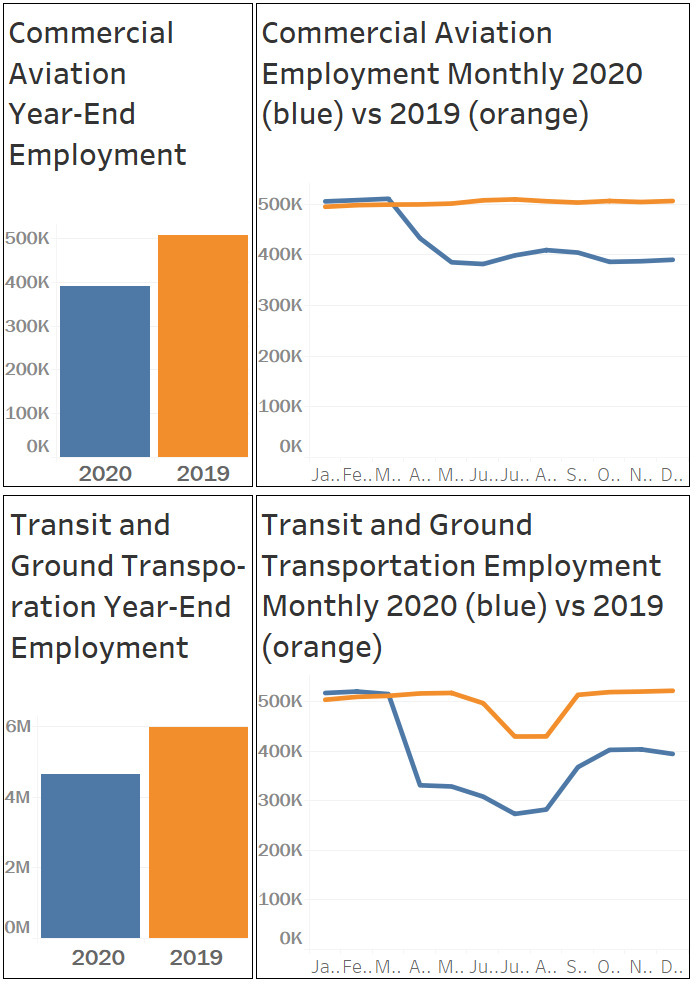COVID-19 Takes a Bite out of 2020 Passenger Transportation
Data spotlights represent data and statistics from a specific period of time, and do not reflect ongoing data collection. As individual spotlights are static stories, they are not subject to the Bureau of Transportation Statistics (BTS) web standards and may not be updated after their publication date. Please contact BTS to request updated information.
Pandemic, Economic Impact Make Their Mark
In 2020, the COVID-19 pandemic caused sharp reductions in passenger travel of every type. Year-over-year declines in different modes of transportation include commercial aviation (down 48-60%) to passenger vehicle border crossings (down 37-91%) and transit ridership (down 63-86%). The pattern for the year: An unprecedented drop in activity with the onset of COVID-19 in late March / early April that was sustained throughout. Our Monthly Transportation Statistics tell a similar tale.
Total number of trips far below 2019.
In March 2020, as the coronavirus spread, many Americans began to stay home. As a result, the estimated 370 billion trips taken by Americans in 2020 numbered 26% lower than the 498 billion trips taken in 2019. (NOTE: A “trip” occurs when a person leaves a location and stops at another location for at least 10 minutes.)
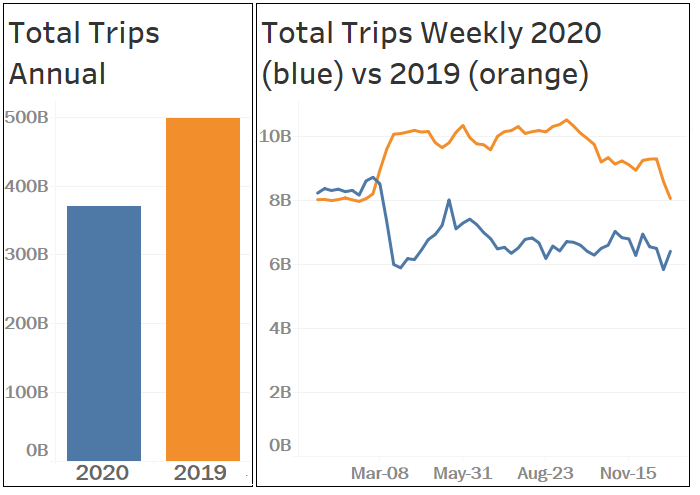
Air travel suffers steep drop.
The decrease in commercial aviation activity has been well-documented. The 4.96 million commercial flights operated in 2020 represents a 48% decrease from the 9.46 million operated in 2019.
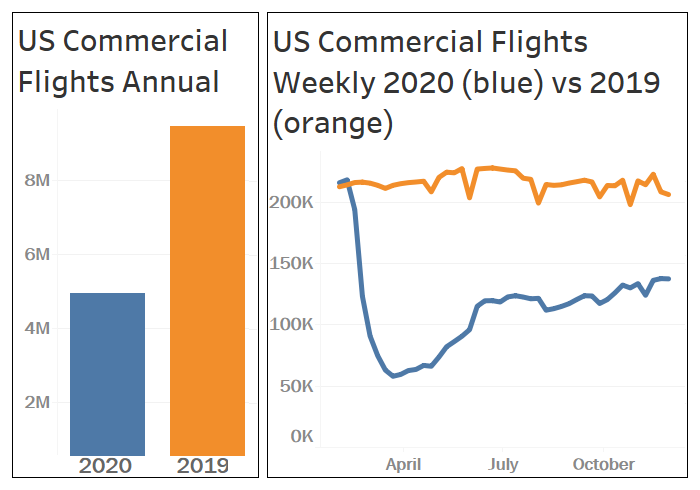
Similarly, the 324 million people screened by the Transportation Security Administration (TSA) in 2020 represents a 61% decrease from the 823 million screened in 2019.
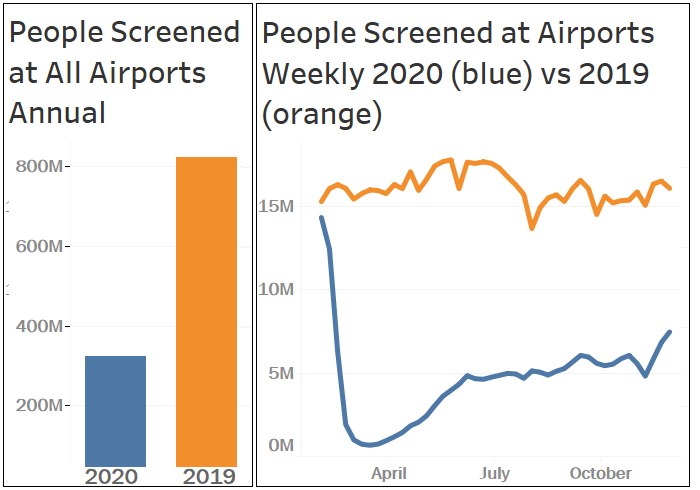
Passenger vehicles enter U.S. at lower rates.
At the Nation’s northern and southern borders, the number of passenger vehicles entering the U.S. dropped by April 2020 and stayed low through the rest of the year. In 2020, 1.8 million passenger vehicles entered the U.S. from Canada, a 91% decline from the 20 million entering in 2019. The decline in traffic over the southern border was less severe; the 31.6 million passenger vehicles entering the U.S. from Mexico was only down 37% from the 50.3 million entering in 2019. Travel restrictions on incoming persons are in place at both borders; for example, travel for tourism, shopping, and routine family visits is not permitted. However, travel to work in the U.S. is permitted, and cross-border employment is greater near the southern border.
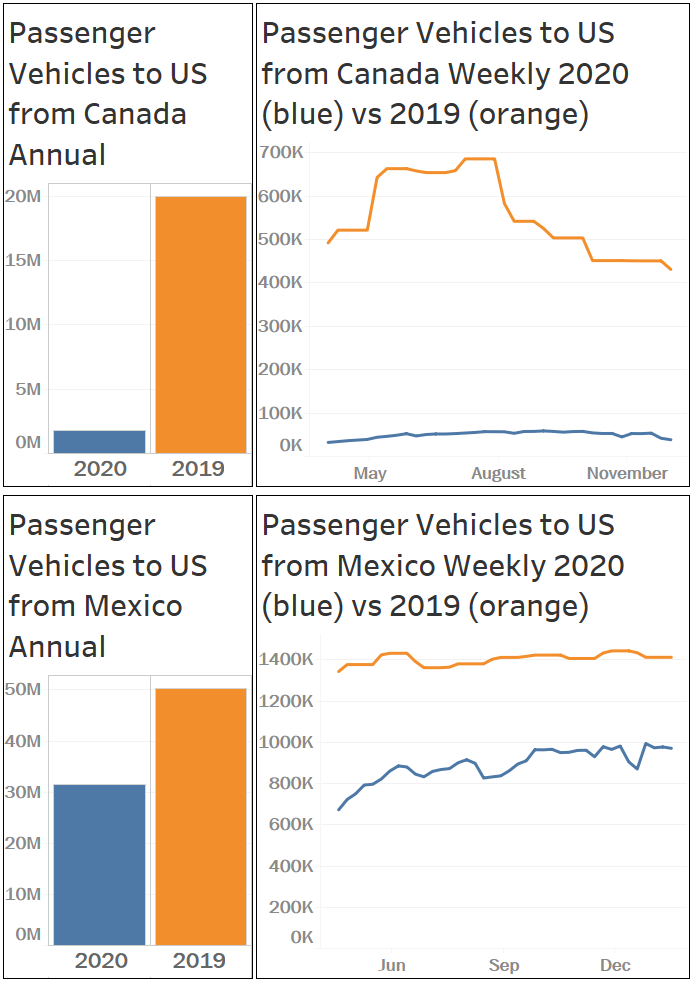
Transit agencies devastated by low ridership.
As shown below, all three of the transit agencies BTS tracks in “The Week In Transportation” hit low marks in ridership in early April and stayed low throughout the year. New York City’s MTA recorded 667 million riders in 2020, down 63% from 2019’s 1.794 billion riders. In Washington, DC, WMATA’s 53 million bus and rail riders represented a 79% drop from 2019’s 248 million riders.
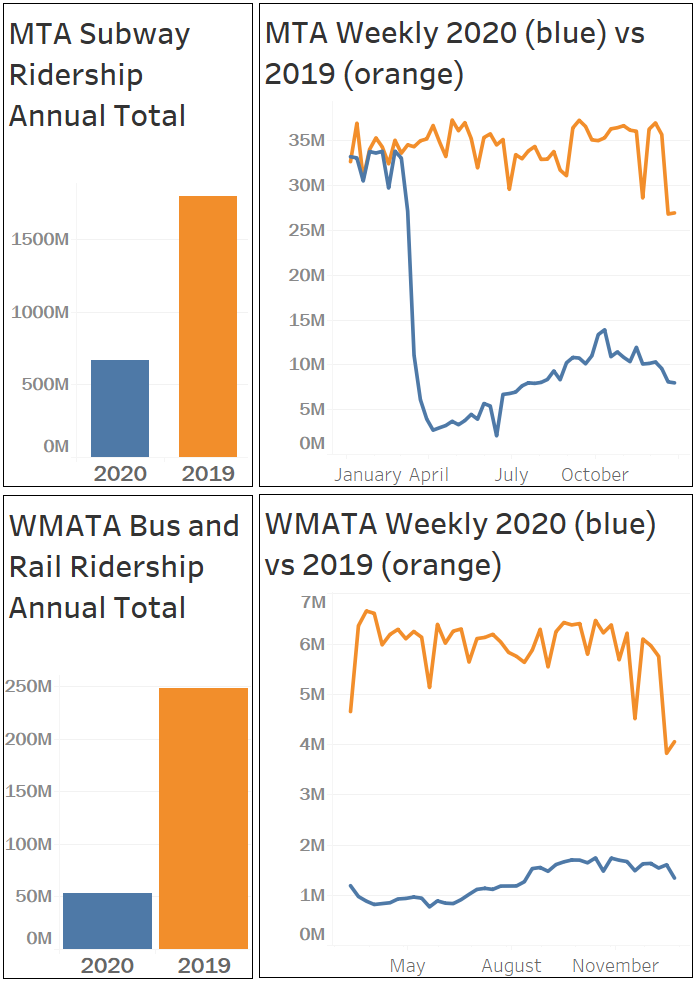
To get a sense of how this drop might affect a transit agency’s budget, Bay Area Rapid Transit (BART) compares its actual ridership to the ridership assumptions from its 2020 budget. The 14 million riders fell short of the target budget number of 98 million riders by 86%. The revenue loss associated with this shortfall has been noted by transit agencies across America.
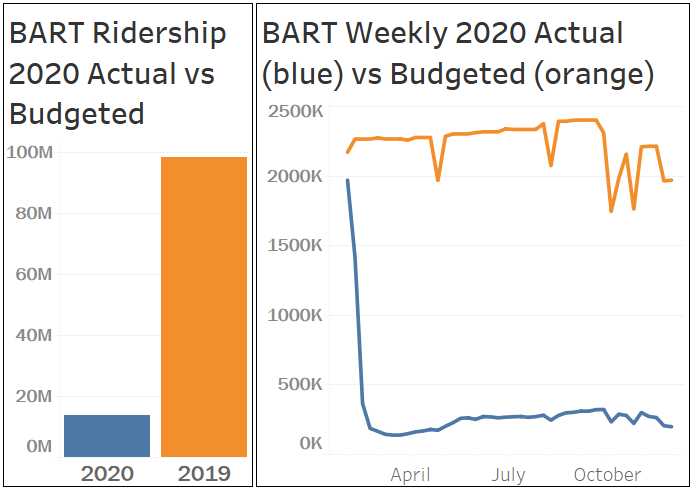
Auto sales lag while light truck sales largely keep up.
The 3.4 million cars sold in the U.S. during 2020 represents a 28% drop from the 4.7 million sold in 2019. Americans bought 11 million light trucks (a category that includes vans, minivans, pickup trucks and SUVs) in 2020, only a 10% decline from the 12.2 million sold in 2019.
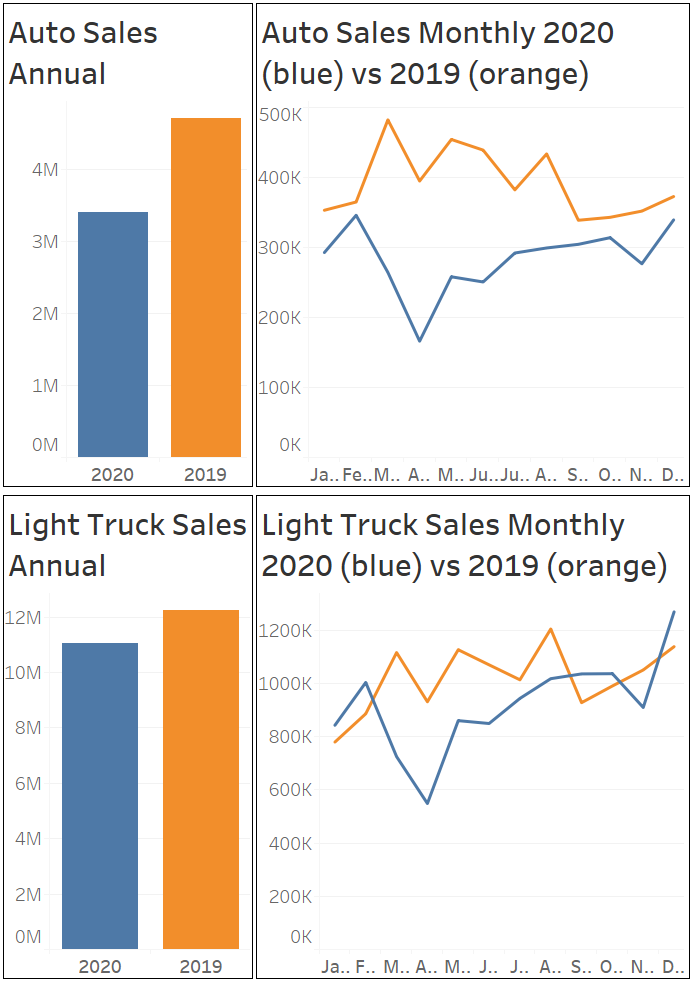
Declines in passenger transportation push related employment downward.
In December 2020, 390 thousand people were employed in commercial aviation, a 23% drop from the 506 thousand employed in December of the previous year. In transit and ground passenger transportation, the 5.1 million employed in December 2020 represented a similar 15% drop from the 6 million employed in December 2019.
